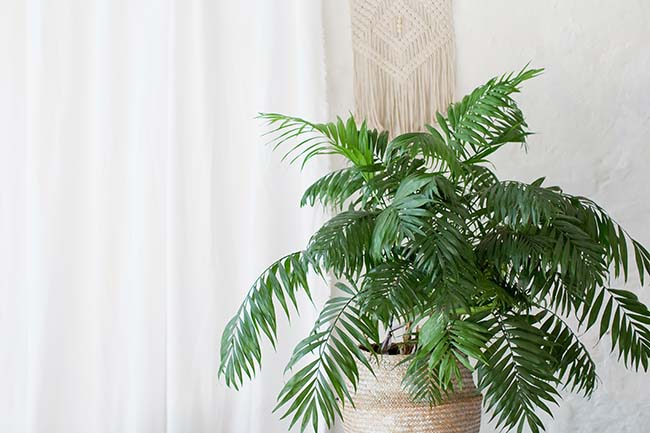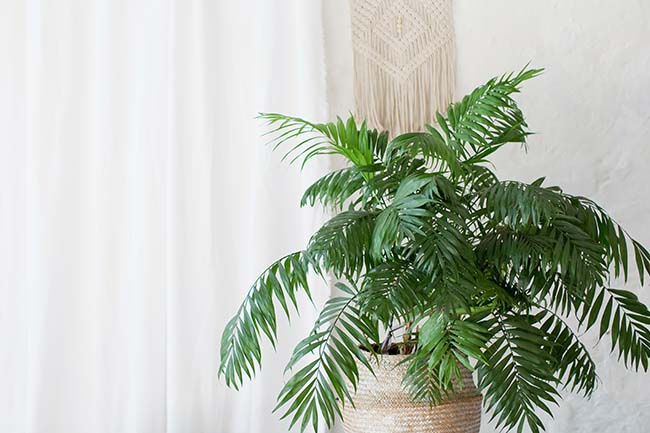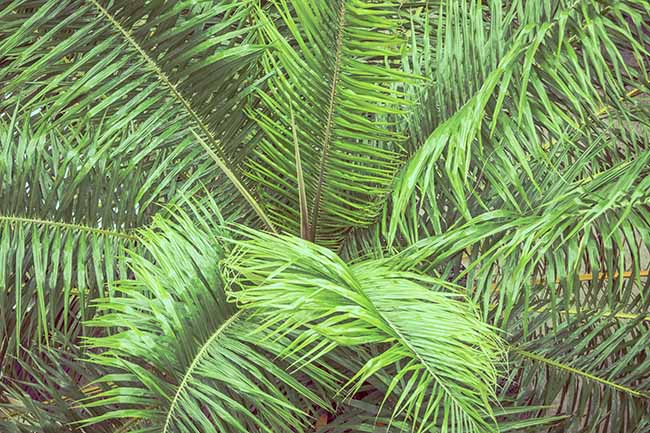Indoor Palm Tree Care – Grow your Palm

Indoor Palm Tree plants tolerate extremely high temperatures very well. Many consider a significant obstacle to growing them in climates that are not their original, or they want to keep them in (air-conditioned) rooms as decoration.
However, like all other plants, if provided with adequate care, palm trees can be grown in a pot on the terrace, living room, office, or wherever you want. The Chinese palm, mountain palm, and rapili are just some species ideal for growing at home.
Page Contents
- 1 Palm growing temperature
- 2 Majesty palm care indoor
- 3 Sago palm indoor care
- 4 Areca palm indoor
- 5 Pygmy Date Palm indoor
- 6 Ponytail palm indoor care
- 6.0.0.1 Security Cameras Wireless Outdoor, 2K Battery Powered AI Motion Detection Spotlight Siren Alarm WiFi Surveillance Indoor Home Camera, Color Night Vision, 2-Way Talk, Waterproof, Cloud/SD Storage
- 6.0.0.2 Ring Video Doorbell Wired (newest model), Use Two-Way Talk, advanced motion detection, HD camera and real-time alerts to monitor your front door (wiring required)
Palm growing temperature
Most palm trees require a temperature that must not be lower than 7 degrees Celsius throughout the year to grow outdoors. Considering that temperatures can drop as low as 20 degrees below zero in some areas, growing a palm tree outdoors can be pretty tricky. However, it is not impossible. With adequate care, these plants can be grown in a pot, on the terrace, or indoors.
Choosing a place
First of all, potted palms should be placed in a well-lit place. Most types of palm tolerate sunlight well, but on the condition that it is not direct. That applies to both outdoor and indoor plants. If you take the pot with the palm outside, choose places sheltered from the wind.
In closed spaces, palm trees like daytime temperatures of 21 to 26 degrees and at night no lower than 15 degrees Celsius. That is why she should be given such a place.
Watering the palm tree
Water the plant when there is a little water on the surface of 5 cm and completely dry below. For palm trees indoors, it is essential to check the humidity once or twice a week. For outdoor plants, moisture should be checked daily. Pour the water until it accumulates in the container for collecting water under the pot. After half an hour, pour it out.
Transplanting a palm tree
Repot palms into larger containers every 2 to 3 years and use pots with drainage holes in the bottom. It is preferable to get the same type of potting soil that you used in the old pot.
Majesty palm care indoor
The Majesty Palm is a large tropical palm with gorgeous, feathery leaves. This type of palm originates from Madagascar, and it can usually be found along the banks of rivers. The leaves of the Majesty’s palm grow upright from the trunk, then curl at the ends to form a large crown. Although relatively new to houseplants, this palm tree is the perfect decoration for any home with proper care.
It does best in solid indirect light but also performs well in medium-strong indirect light.
The average room temperature is entirely suitable for this palm tree, so anything that is comfortable for you will also be perfectly OK for the plant.
When choosing a pot, choose one that provides good drainage. Mix in perlite or lava rock to increase soil aeration, if needed. A well-cared-for Majesty Palm can grow up to six meters in height!
Watering majesty palm
Water once every 10 to 15 days, allowing the soil to dry halfway between waterings. If the palm is exposed to stronger light, it needs more frequent watering and vice versa – if it is in the shade, don’t water as often. It is recommended to always check the soil moisture level before watering.
As for the air humidity in the room, it should be slightly higher, so it would be good to place a humidifier in the house near the tree.
Majesty palm soil
The best soil mix for Majesty palms is “rich” soil capable of draining water well and draining soil that will retain adequate moisture. In addition, the soil must have the appropriate acidity, in this case relatively high – the pH should be as high as 5.0.
A mixture of two parts sand, two parts peat moss, and one part loam is a good start. Cactus soil with a few peat mosses can also be a good choice.
Together with the room lighting, temperature, and air humidity, the quality of the soil is key to the health and survival of the plant. In addition to anchoring the plant to the substrate, soil provides nutrients, oxygen, and water necessary for the proper growth and development of the plant. Here’s how soil affects plant health:
- Soil contains the necessary nutrients. The roots absorb minerals such as calcium, copper, magnesium, nitrogen, phosphorus, and others.
- Soil is loose soil, full of pores. They contain water and deliver it to the plant’s roots, which, together with nutrients, are distributed throughout the entire plant. This process is significant for facilitating photosynthesis and regulating the plant’s temperature by allowing water to evaporate through the leaves.
- Soil pores contain air. It is necessary for plants to transform sugar into energy but also to release oxygen into the environment.
- The earth insulates the roots of plants, protecting them from temperature changes and other external factors.
Soil is a mixture of mineral particles and organic matter, known as biomass. The soil type depends on the texture and particle size of the minerals.
- Sand: The largest particles are sand. Sandy soil does not tend to retain moisture or nutrients but allows rapid aeration of plant roots.
- Clay: The smallest known particles are the clay. Clay soil drains and retains water and nutrients very slowly. But it doesn’t hold much air.
- Silt: Silt particles are between sand and clay particles in size. Water and nutrient retention, drainage rate, and aeration levels are also in the middle.
A good combination of sand, clay, and silt mixture is crucial for every plant, including palm trees. A balanced number of particles makes the soil “loamy.” Other types of dirt that are often used are “peat,” which contains a lot of biomasses (offers drainage, moisture retention, and aeration, and tends towards acidity). So-called “chalky” soil has a lot of calcium carbonate, which makes it alkaline. Chalky soil tends to drain quickly but does not retain nutrients as desired. From all of the above, it is vital to choose the right mixture so that the plant is healthy and overgrows.
Majesty palm fertilizer
Majesty palms grown indoors are best fed with a houseplant fertilizer with slightly higher nitrogen content. It is recommended that it be an NPK ratio of 3-1-3. A liquid, water-soluble, or slow-release fertilizer can be added to Majesty palms outdoors in the same ratio. Feeding during the winter months, when the plant is in a state of hibernation, is not recommended.
Sago palm indoor care
The Sago Palm or Japanese Sago Palm is an attractive tropical houseplant. It is characterized by longevity, relatively low growth, and simplicity of cultivation. If the care is correct, this indoor plant becomes a unique tropical detail in any space.
For proper growth and development, the cycad palm tree needs a lot of light, but not direct light. The color and size of the leaves will depend on the exposure to sunlight. The leaves are darker green and can be up to two meters long if they are not constantly exposed to direct sunlight, and if they are in a dark place, they get longer. However, the plant does not get new leaves if it is not sufficiently exposed to the sun.
Source: freepik.com
Areca palm indoor
Areca Palm is also known as one of the most common house palms. The Areca Palm is characterized by narrow, upright leaves that bend at the top and resemble bamboo leaves.
They can be grown outdoors but also indoors as indoor plants. It is best to plant them now, in the springtime. If you grow it as a houseplant, it needs a pot with good drainage. When it comes to regular maintenance, water it when the soil starts to dry. These plants like bright, filtered sunlight but can also tolerate full sun. Indoors, areca palms do best with exposure to bright light from a south- or west-facing window.
Source: freepik.com
Pygmy Date Palm indoor
As it ages, the Dwarf Palm may take on the appearance and shape of a pineapple-like trunk. Suppose the remnants of old leaves are eliminated. In that case, the upper part looks bumpy, which gives this ornamental plant a lovely and unusual shape.
Pygmy Date Palm is ideal for placement in the following areas:
- Great for spaces with higher ceilings
- Great for space with room for a grouping of plants
- Great for spaces with bright indirect light
- Great for spaces with shelving or with an upward climbing trellis
Source: freepik.com
Ponytail palm indoor care
Ponytail palm is an exotic that enchants! Since Elephant’s Foot is a succulent, it does best in semi-arid conditions. When this plant is grown as a houseplant, it is necessary to allow the soil to dry out significantly between waterings.
Since dry soil is needed to care for nolina, it is best to use soil like a cactus. When transplanting, the pot must be only a centimeter or two more comprehensive than the previous one. When watering, the plant may receive more water than it needs if it is transplanted into a larger pot, which can damage the plant’s health and growth.























